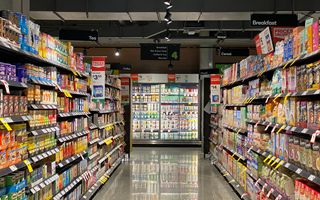(Finance) – The company turns 35 exactlySupermarket survey Of Other consumptioncreated with the aim of comparing the price positioning of supermarkets to help consumers choose the store where they do their shopping and contribute to the transparency and competitiveness of the market. A tool that is even more valuable in the current socio-economic context. The 2023 scenario, in fact, has seen inflation continue to run and, despite theincrease in income (+4.7%), the purchasing power of Italians fell by a further 0.5%, after the sharp contraction (-1.8%) recorded in 2022, with consequent erosion of household savings.
In this context, the supermarket survey developed by the Organization aims to be an effective support for saving on the “shopping cart”, a cost that is difficult to compress, which represents a significant item in the family budget. Thanks to Altroconsumo data, in fact, a couple with 2 children, who spend an average of 9,128 euros a year (Istat 2023 data) can save up to 3,400 euros by purchasing the cheapest products on sale in the most convenient discount store in the survey for this type of expense. But even a single person can obtain a significant saving of 2,100 euros on an average annual expense of 5,548 (Istat 2023 data). In both cases, this is a saving of over 35%.
The Altroconsumo survey – carried out from 4 March to 31 March 2024 in 1,140 stores distributed across 65 Italian cities – measures the positioning dthe price of the points of sale and chains of the GDO based on 4 possible spending baskets (branded products, private label, cheaper and mixed), summarizing the analysis of 1,400,000 prices of all products on the shelves in 126 categories of food products, home and personal care and pet food.
In the face of a decreasing but still high inflation rate in 2023, the good news is that in the 12 months from March 2023 to March 2024, prices in the stores examined showed an average increases contents and in some cases almost zero. The type of store that increased prices the most were the superstores with an increase of 1.74% followed by the hypermarkets +1.6%. The closing discount which, with a 0.25% increase, have practically not changed prices. These are therefore very small increases, which mark a decisive change of pace in the dynamics of shopping cart prices which in recent years had recorded a surge: just think that in 2023 the average increase in prices over the previous year in discount stores, hypermarkets and supermarkets stood at + 12.6%.
Altroconsumo has also calculated the annual expenditure by region considering the average expenditure of Italian families at the supermarket (Istat, 2023) and the prices recorded in all the stores visited.
The Trentino Alto Adige is the cheapest region in the survey, followed by Friuli-Venezia Giulia, Veneto, Lombardy, Calabria and Tuscany. The most expensive are Aosta Valleywhere 16% more is spent than the cheapest region, Lazio (+10%), Umbria And Marche (+9%) and Emilia-Romagna (+8%).
There income expenditure weighs from 12% to 14% in the regions with the highest annual family income (50-58 thousand euros), i.e. Trentino-Alto Adige, Lombardy, Veneto, Emilia-Romagna, Tuscany, Piedmont and Lazio. While it weighs from 16 to 17% in the regions with the lowest annual family income (40-43 thousand euros), i.e. Calabria, Molise, Basilicata, Sardinia and Sicily. In the poorest regions, therefore, people spend up to 5% more of their budget than in the richest regions: in the face of much lower incomes, the prices recorded were still similar or even higher than those of the richest regions.
(Photo: Franki Chamaki on Unsplash)
